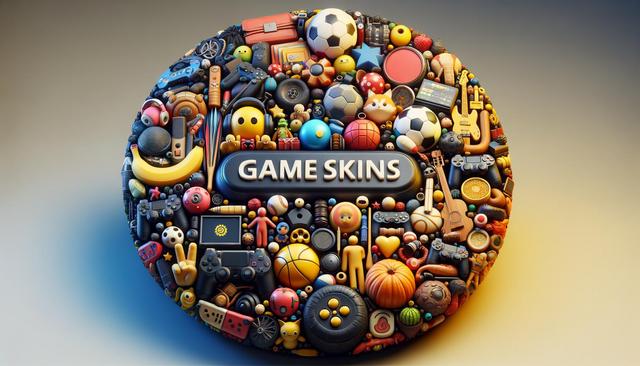The Role of Game Skins in Modern Gaming
Game skins are more than just cosmetic upgrades—they influence how players interact with a game and how they perceive its overall aesthetic. These visual enhancements can be applied to characters, environments, weapons, and other in-game assets, allowing players to personalize their experience. As gaming has evolved, so has the demand for high-quality skins that reflect creativity, functionality, and seamless integration with gameplay. The growing importance of visual customization has led to a surge in interest around Game Skins and Design Courses, offering creators the tools to develop skins that elevate user engagement.
From enhancing immersion to boosting replay value, game skins serve multiple purposes. Their impact extends beyond aesthetics, contributing to:
- Player identity and self-expression
- Branding opportunities within games
- Monetization strategies through in-game purchases
Whether designed for casual mobile games or competitive multiplayer titles, skins require thoughtful design aligned with both UI and UX principles.
UI and UX Principles in Skin Design
Creating effective game skins requires a deep understanding of both user interface (UI) and user experience (UX) design. UI focuses on the visual components that players interact with, such as buttons, icons, and skins themselves, while UX considers how intuitive and enjoyable those interactions are. In the context of skin design, a successful UI ensures that new skins integrate smoothly with existing game elements, while good UX ensures that players feel satisfied and engaged when using them.
Key UI and UX principles to consider when designing game skins include:
- Consistency with the game’s visual language
- Clarity and readability in all lighting conditions
- Responsive feedback when skins are selected or applied
- Accessibility for players with different visual needs
By mastering these fundamentals, aspiring designers can create skins that not only look appealing but also enhance gameplay. Enrolling in Game Skins and Design Courses is a great way to build these skills systematically.
Learning to Design Game Skins
Developing game skins involves more than artistic talent—it requires technical knowledge and an understanding of the tools used in the industry. Many specialized Game Skins and Design Courses offer structured curriculums that teach both beginners and experienced designers how to create polished and functional skins. These courses often cover topics such as digital illustration, 3D modeling, animation basics, and software proficiency in tools like Photoshop, Blender, or Unity.
Depending on your goals, you might choose courses with a focus on:
- 2D vs. 3D skin creation
- Platform-specific design (e.g., mobile, PC, console)
- Game engine integration
- Design workflows and asset management
These programs not only enhance your technical skills but also help you build a professional portfolio, which is essential for breaking into the gaming industry.
Monetizing and Showcasing Your Work
Once you’ve developed the skills to create game skins, showcasing and monetizing your work becomes the next logical step. There are several platforms where designers can upload and sell their creations, often earning revenue through commissions or in-game marketplaces. Game developers are also increasingly open to community-generated content, making user-designed skins a viable path into professional game development.
To stand out in a competitive market, it’s important to:
- Maintain a consistent and recognizable style
- Follow submission guidelines for different platforms
- Engage with online communities for feedback and exposure
- Continue learning through advanced Game Skins and Design Courses
By treating your work as both an art and a product, you can carve a niche in the growing ecosystem of user-generated game content.
Benefits of Formal Education in UI/UX and Game Skin Design
While self-learning is a valid approach, formal education offers structure, mentorship, and access to industry insights that can significantly accelerate your progress. Enrolling in Game Skins and Design Courses provides a guided pathway from foundational skills to advanced techniques. These courses often include project-based learning, peer collaboration, and personalized feedback—all of which are valuable for developing real-world competencies.
Additional benefits include:
- Access to up-to-date tools and technologies
- Networking opportunities with peers and professionals
- Portfolio development with instructor-reviewed projects
- Certifications that enhance your credibility
Whether aiming for a personal project or a professional role in a game studio, structured learning can prepare you to create game skins that are both visually impressive and user-friendly.
Conclusion: Turning Creativity into Skill
Game skins are a blend of art and design that offer players deeper personalization and developers new avenues for engagement. For aspiring designers, learning how to create these assets through dedicated Game Skins and Design Courses opens the door to both creative expression and career opportunities. By focusing on UI and UX principles, mastering essential tools, and building a solid portfolio, you can transform your passion for game aesthetics into tangible, valuable skills. Whether you’re a gamer looking to contribute to your favorite titles or an artist aiming to enter the gaming industry, the journey begins with the right education and a commitment to thoughtful design.
